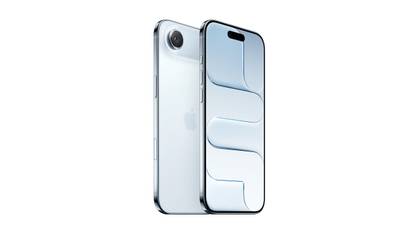The iPhone Air is a perplexing phone.
Just like my experience with Samsung’s Galaxy S25 Edge a few months ago, Apple’s super-thin iPhone Air has grown on me rather quickly. The phone is so feather-like and thin that when I slide it into my front pocket, it almost feels like there’s nothing there. Its thinness and weight might not seem like a significant change when you see the device in pictures or videos, but it’s very noticeable when you’re actually holding the smartphone.
It’s worth noting that this is the first new addition to the iPhone lineup in several years, alongside the fact that it replaces the iPhone 16 Plus. Since the iPhone Air’s reveal, there’s been a lot of speculation about what its unique, ultra-thin design means for Apple’s future. Is it a precursor to the often-rumored foldable iPhone? Will its key design features trickle down to other iPhones? I’m leaning towards the former, and can see the inevitable foldable iPhone or iPad basically being two iPhone Airs glued together.
The sleek-looking phone isn’t without significant drawbacks, though. First, the iPhone Air only features a single f/1.6 48-megapixel camera (there’s no ultra-wide, or telephoto lens), and its sensor-crop zoom only hits 2x. There are also concerns about battery life, given the phone’s thin design. The good news is it’s not as bad as I expected, but it’s not great either. With all of that in mind, the iPhone Air is clearly a statement from Apple, thanks to its attention-grabbing design that makes it clearly stand out from other iPhones and most Android devices.
The key question surrounding the phone is whether its technical trade-offs are worth its very cool-looking aesthetic — and the answer to that question is difficult to parse.

- Brand
- Apple
- SoC
- A19 Pro 6-core CPU, 5-core GPU
- Display
- 6.5-inch 2736 x 1260 pixel resolution Super Retina XDR display
- RAM
- N/A
The super thin iPhone Air is just 5.6mm thick and features a single 48-megapixel camera lens. Its display comes in at 6.5-inches with supports for ProMotion 120Hz, and its front and back features ceramic shield construction.
- Sleek design
- Super light
- Single lens snaps good photos
- Battery life isn’t stellar
- Only one lens
- Glossy titanium sides
The sleekest iPhone ever
If this is Apple’s future, I’m all in
The best thing about the iPhone Air is obviously its design.
The iPhone Air is remarkably thin, measuring 0.22-inches (5.6mm) — but it may not be as slender as some expected. To put this in perspective, the Galaxy S25 Edge is 0.23-inches (5.88mm) and the iPhone 17 Pro is 0.33-inches (8.25mm). While the few millimeters difference is undeniably noticeable, it’s the weight that feels more game-changing to me. When I hold the iPhone Air in my hand, I appreciate the fact that it weighs only 5.8oz (165g), compared to the iPhone 17 Pro’s 7.2oz (206g).
This makes it easier to use in nearly all situations, whether that’s holding it above my head while scrolling social media in bed (I’m notorious for dropping my phone on my face) or quickly checking my messages while I’m running errands. On the other hand, I find that its display is a bit too big at 6.5-inches. This makes it slightly smaller than the 6.7-inch iPhone 16 Plus and bigger than the 6.3-inch iPhone 17 Pro, but still smaller than the 6.9-inch iPhone 17 Pro Max. I would have preferred the iPhone Air featured a display size somewhere in the 6.1 to 6.3-inch range because that would make its thin body slightly easier to grip.
With that said, the display looks great, whether I’m watching Foundation on Apple TV+ or scrolling content on Threads, and it’s impressive Apple packed a 120Hz ProMotion display that can hit 3,000 nits of peak brightness in a smartphone this thin and light. Flipping the iPhone Air over reveals its glass iPhone 16-like camera bump with a single lens (Apple calls the bump a “plateau”). The bump sort of resembles the iPhone 17’s rear camera array flipped to its side and stretched. I don’t dislike this look, but the actual camera performance has left me somewhat disappointed (more on this later), and I wish there were more lens options.
If you’re worried that this ultra-light and thin smartphone will turn into “Bendgate 2,” that’s seriously not happening.
Lastly, like the iPhone 17 Pro, the iPhone Air features a throwback curved look, but coupled with this are glossy titanium sides. Apple says it opted for titanium because it’s a more durable material, and that it made the switch back to aluminum with the iPhone 17 Pro because it dissipates heat better. Part of me wonders if the iPhone Air still features titanium because it was in development long before the iPhone 17 Pro, but we’ll never know for sure. Either way, I’m not a fan of the glossy, smudge-magnetic look and prefer the iPhone 17’s and iPhone 17 Pro’s matte sides. On the plus side, the iPhone Air feels extremely durable thanks to its Ceramic Shield 2 display and Ceramic Shield back. If you’re worried that this ultra-light and thin smartphone will turn into “Bendgate 2,” that’s seriously not happening.
Apple even asked media, YouTubers, and influencers to try to bend the phone during briefings following the phone’s reveal keynote — as someone who’s attended countless Apple briefings at this point, this is very out of character for the tech giant and speaks volumes about how confident it is in the iPhone Air’s durability.
- Brand
- Apple
- SoC
- A19 Pro 6-core CPU, 5-core GPU
- Display
- 6.5-inch 2736 x 1260 pixel resolution Super Retina XDR display
- RAM
- N/A
- Storage
- 256GB, 512GB, 1TB
- Ports
- USB-C (supports USB 2)
- Front camera
- f/1.9 18-megapixel (Center Stage)
- Rear camera
- f/1.7 48-megapixel
- Dimensions
- 6.1 x 2.9 x 0.22-inches (156 x 74.7 x 5.64mm)
- Colors
- Sky Blue, Light Gold, Cloud White, Space Black
- Weight
- 5.82oz (165g)
- Charge speed
- MagSafe wireless charging up to 20W with 30W adapter or higher
- IP Rating
- IP68
- Price
- $1,000
Lackluster camera performance
Samsung fit an ultra-wide lens in its super-thin Galaxy S25 Edge — why can’t Apple?
One of my biggest issues with the iPhone Air is that it features only a single 48-megapixel camera with an f/1.6 lens and 2x zoom achieved through sensor cropping. There’s no ultra-wide shooter or telephoto camera. When you take into account its $1,000 price tag and that the iPhone 17 Pro and its three-camera array costs only $100 more, the iPhone Air becomes a tough sell for most iPhone users.
On top of that, I find it difficult to believe that there won’t be an iPhone Air 2 next year with at least one additional lens, whether it ends up being an ultra-wide or a shorter telephoto shooter. Samsung was able to make it happen with a phone body that’s only a few millimeters bigger than the iPhone Air, so what’s stopping Apple? I know there are some in the tech media sphere that strongly feel this won’t happen since it would require a redesign of several of the iPhone Air’s components, including its camera bump. But the tech giant has a long history of significantly changing up the design of second generation devices, so I think that it’s very possible.
With that out of the way, I’d describe the iPhone Air’s camera performance as pretty good, but limited given the single-lens setup. Its sensor is slightly smaller than the iPhone 17 Pro’s, resulting in poorer low-light performance and oddly inconsistent handling of highlights under challenging lighting (I have similar thoughts about the iPhone 17’s main shooter). I also miss the ability to snap macro shots with the iPhone 17 and the iPhone 17 Pro’s ultra-wide camera. Still, I was able to shoot several stunning looking photos with the iPhone Air’s single 48-megapixel lens.
On the plus side, the f/1.9 18-megapixel front camera snaps great selfies and is the same front-facing camera as the rest of the iPhone 17 lineup. This means it also features Center Stage, allowing you to switch between portrait and landscape selfies on the fly, thanks to its square sensor. This is a feature the selfie-obsessed will find very useful. Photos taken with the front-facing camera appear crisp and bright, with minimal skin smoothing.
A performance powerhouse
The A19 Pro doesn’t seem to run that hot
One of my main concerns with the iPhone Air was how the A19 Pro chip would perform in such a thin body. While you only get five GPU cores compared to the six in the iPhone 17 Pro, the iPhone Air still feels like an absolute beast, and to my surprise, it seems not to even get as hot as the iPhone 17 Pro (this makes me question Apple’s titanium vs aluminum claims a bit).
Editing images in Lightroom CC is a smooth experience, and any triple-A game I throw at, is handled with ease. For those that care about benchmarks, the iPhone Air hits 3,723 for single-core and 9,388 for multi-core on Geekbench 6.
So if you want a smartphone with long-lasting battery life, the iPhone Air clearly isn’t for you.
Then there’s the question of battery life. No, the iPhone Air doesn’t have great battery life, but I was able to make it to about 6-8pm, depending on what I did with my smartphone that day. For example, during a day of snapping a lot of photos for this review, I barely made it to 6pm, while with a more moderate use situation, including a bit of social media scrolling, listening to podcasts, and watching a few shorter YouTube videos, the iPhone Air easily made it to 8pm with my day starting at about 7am. You could always buy the iPhone Air MagSafe battery, which is undeniably a very cool-looking accessory, but that defeats the purpose of having a super-thin smartphone (on that note, Apple’s frost iPhone Air case is great-looking).
So if you want a smartphone with long-lasting battery life, the iPhone Air clearly isn’t for you.
Who is the iPhone Air for?
I don’t know (and I’m not sure Apple does either)
That brings me to the key question surrounding the iPhone Air – who is this phone actually for? The iPhone 17 Pro and iPhone 17 Pro Max are aimed squarely at content creators now, while the iPhone 17 is the phone for everyone (even more so now that it features a 120Hz screen), and the iPhone Air… well, I’m still not entirely sure.
It wouldn’t work for someone like me who’s a phone enthusiast, because as cool as the iPhone Air looks, I want that extra ultra-wide/telephoto lens, and I care too much about battery life. I don’t think my partner would be happy with it either, given how important battery life is to her. Even my mom would probably opt for the cheaper base iPhone 17 to get that extra camera lens, especially given the minimal price difference.
To me, the iPhone Air is for the Apple user who wants a flashy smartphone that makes a statement, and that doesn’t care about extra camera lenses and battery life. As cool as the iPhone Air is, my guess is that its audience is pretty small.

- Brand
- Apple
- SoC
- A19 Pro 6-core CPU, 5-core GPU
- Display
- 6.5-inch 2736 x 1260 pixel resolution Super Retina XDR display
- RAM
- N/A
Trending Products

Wireless Keyboard and Mouse Combo, ...

Lenovo New 15.6″ Laptop, Inte...

Dell Inspiron 15 3520 15.6″ F...

Acer Nitro KG241Y Sbiip 23.8” Ful...

Wireless Keyboard and Mouse Combo, ...

Zalman i3 NEO ATX Mid Tower Gaming ...

GAMDIAS ATX Mid Tower Gaming Comput...

Sceptre Curved 24-inch Gaming Monit...

Acer SH242Y Ebmihx 23.8″ FHD ...











